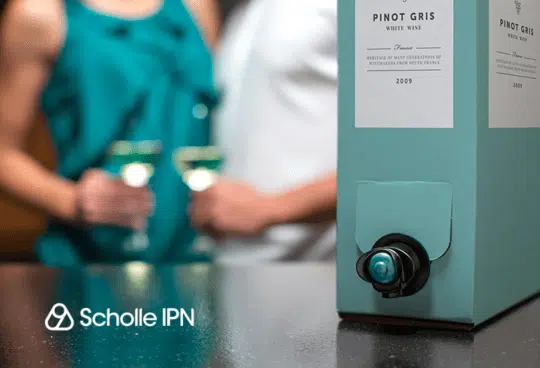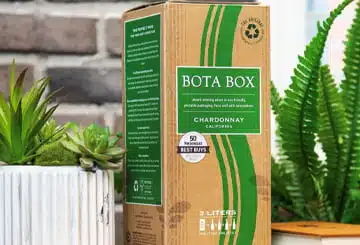Why Boxed Wine is Here to Stay
Boxed Wine Sales are Growing—Here’s Why We Think Boxed Wine is Here To Stay
 The way we drink wine has fundamentally changed. According to reporting done by the New York Times, 14.8% of all wine consumed prior to the current COVID-19 pandemic was done on-premise—in restaurants or at bars.1 Now, around only 7% of all wine is consumed on-premise while wine sales are up 16% from the year before.
The way we drink wine has fundamentally changed. According to reporting done by the New York Times, 14.8% of all wine consumed prior to the current COVID-19 pandemic was done on-premise—in restaurants or at bars.1 Now, around only 7% of all wine is consumed on-premise while wine sales are up 16% from the year before.
A shift in consumer habits necessitates a shift in how we deliver products. People are no longer drinking wine by the glass out at their favorite neighborhood spots—almost half (45%) of all wine consumed is purchased at retail outlets that report data to Nielsen (another 34% of wine sales come from “other retail” which are outlets not tracked by Nielsen)2. And that means there’s an opportunity to be innovative and progressive in the way we deliver wine.
Boxed wine emerged as a popular choice for consumers. Not only has boxed wine answered As people shift from visiting bars and restaurants to enjoying drinks at home, but boxed wine also adds an environmental and economical value proposition that has often been overlooked. Now that boxed wine has become a convenient option for folks looking to maximize their shopping experiences by buying larger-format packages, we can begin to promote the myriad benefits of switching from glass bottles to boxed wine.
Boxed Wine Isn’t New
Boxed wine has been a staple of grocery store shelves for decades, but only in the past few years have major publications like VinePair3, Esquire4, and Business Insider5 began to take notice. Each of these outlets released articles ranking the best boxed wines, representing a shift in the legitimacy and quality that boxed wine can deliver to consumers.
From November 2019 to November 2020, boxed wine sales have jumped 18%, representing $1.725 billion in sales of a $20 billion dollar industry. In particular, three liter boxed wine (which can hold the same amount of wine as four 750mL glass bottles) sales grew dramatically over the same time period at 31.4%, with five liter boxes growing at a more modest, but steady rate of 8% over the 52 week period.6
Although this is a significant increase from years past, if we look at data from the previous five years, it’s clear that boxed wine was beginning to ascend in popularity—even before COVID-19 made the value-add of larger formats more desirable. According to Nielsen data, boxed wine sales grew 5.3% in 2019, 4.6% in 2018, and 12.8% in 2017. What might seem like a trend because of the current pandemic is actually an acceleration of a rising preference for wine in an easy-to-access format.
Better For Everyone
National and international brands are recognizing the power and potential of boxed wine, indicating that this is more than just a passing trend. At Scholle IPN, we’ve helped clients like Fabenne, Trinchero, Winesmiths, Kirkland, and Don & Sons adapt some of their most popular wines to a bag-in-box format. Not only are these brands capturing a growing market, but they’ve been able to harness the benefits of boxed wine into marketing strategies that promote the sustainable benefits of boxed wine.
 In 2020, Bota Box had two SKUs break the top 20 wines ordered on Drizly, a popular spirits ordering app that has seen rapid growth since the pandemic.7 Bota Box was already one of the leading boxed wine brands—the brand has put up double digit growth numbers every year since it started in 2003—but its surge into mainstream wine purchasing channels signals a monumental change in how people are purchasing wine. “People are looking to minimize the number of trips they make to stores, and because our wines stay fresh for up to 30 days after opening, they’re a natural choice,” shared Mary Burnham, the director of public relations for Bota Box. “When they realize that each three-liter box contains four bottles and they take into account the quality, the value equation becomes extremely compelling.”
In 2020, Bota Box had two SKUs break the top 20 wines ordered on Drizly, a popular spirits ordering app that has seen rapid growth since the pandemic.7 Bota Box was already one of the leading boxed wine brands—the brand has put up double digit growth numbers every year since it started in 2003—but its surge into mainstream wine purchasing channels signals a monumental change in how people are purchasing wine. “People are looking to minimize the number of trips they make to stores, and because our wines stay fresh for up to 30 days after opening, they’re a natural choice,” shared Mary Burnham, the director of public relations for Bota Box. “When they realize that each three-liter box contains four bottles and they take into account the quality, the value equation becomes extremely compelling.”
Along with being an economical choice, boxed wine also presents a compelling value-add to consumers by providing an environmentally-conscious product while preserving quality longer than glass bottles. The packaging for a three liter boxed wine weighs 93% less and produces 88% fewer greenhouses gases than the equivalent amount of packaging required for wine in glass bottles.8 Boxed wine also stays fresher longer, and provides consumers multiple ways to enjoy wine on their own terms. Instead of opening a bottle and having to finish it that day, consumers can choose how they enjoy their wine—they can nab a quick glass and know that their wine will taste just as good the next day.
A Shifting Sector
The growth of boxed wine represents an overall shift in the way we consume beverages. Not only is boxed wine experiencing substantial growth, but other formats, like cans and RTD cocktails are beginning to gain traction.
Canned wine demonstrates the importance of portability and sustainability that consumers are gravitating towards. Currently, canned wine has captured a small sector of the industry, but has grown 79% in the last year according to a report from Wine Analytics.9
Rather than seeing the growth of both larger and smaller format packages at odds, the surge in popularity of both boxed and canned wine should be considered as part of a bigger shift to packaging that makes sense for consumers. In particular, boxed wine has been the answer to many growing consumer needs, and the opportunities inherent in this format have yet to be fully realized. For example, Bota Box has seen growth in both its traditional wines and its premium lines, with sales of their Nighthawk Cabernet Sauvignon up 80 percent.10 Boxed wine isn’t just an option for folks looking to save money—it’s emerging as a popular and preferable way for many to consume wine.
Learn More
If you want to learn more about how you can make the switch from bottles to bag-in-box, check out the number of ways Scholle IPN can help find the best way to deliver wine to your customers.
